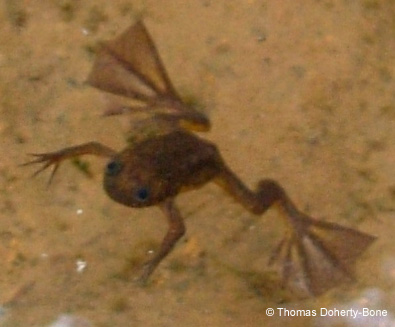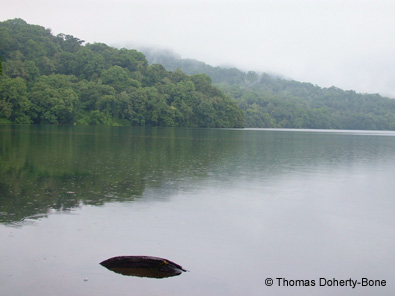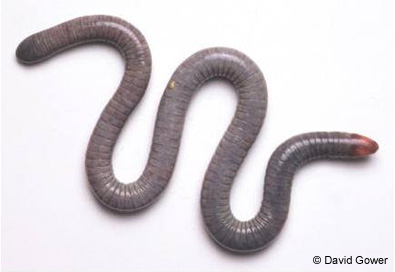Here is the second blog from Thomas Doherty-Bone, who is carrying out research on little know amphibians in Cameroon, including a number of EDGE and highly Evolutionarily Distinct species. Here is an update Thomas wrote when he had just arrived in Cameroon, at the end of October.
Recap
Last time you were introduced to the Lake Oku Clawed Frog, Xenopus longipes, a wonderful little frog which spends its life swimming around in one small, high elevation crater lake in the highlands of Cameroon.

You were told about how its restricted range, vulnerability to disturbance (such as fish introduction) and its unique evolutionary characteristics place it on the EDGE list. You were also informed of our recent observations on morbidities and mortalities of this critically endangered frog, and the uncertainty as to their causes, and even implications (though we are assuming the worst, despite hoping for the best). This time you will be informed of what is being done to address the conservation problems of Xenopus longipes, EDGE species # 34.
The 2008 Expedition
This year, in October, a research project will be initiated to find out whether these sick frogs are a sign of a population in collapse. Supported so far by grants from the Zoological Society of London, Royal Zoological Society of Scotland and the British Ecological Society, this project will conduct surveys on the population of X. longipes and gather information from its environment. The latter will include water chemistry of the lake and temperature. The training of local technicians will take place so to establish a monitoring programme for this frog and its lake.
By obtaining consistent data on the lake’s seasonal fluctuations, and of its frog, it may be possible to deduce what are natural fluctuations and what are abnormal changes in population size; features of the lake; or both. Disease will also be monitored, especially Ranavirus, where a strain different to the known European variety may be present in Lake Oku. This virus could be a natural part of X. longipes’ microparasite diversity, perhaps regulating the population, a co-evolved interaction between a host and its parasite. There is also the odious possibility that this disease arose from an introduced pathogen, as seems to be the case of the chytrid fungus, Batrachochytrium dendrobatidis, which will also be monitored.
Not Just Frogs
This is part of the wider Conservation Research for Amphibians Unique to Cameroon (CRAUC) project, involving staff of the Natural History Museum, London, Oku community and Cameroon Herpetological Project (CamHerp). On top of this frog, work will involve tracking down several caecilian species (“worm-like” amphibians) that are unique to Cameroon, but have not been seen since their original discovery: some for decades, such as Herpele multiplicata; one species, Crotaphatrema bornmuelleri has not been seen since 1893!
Herpele multiplicata specimen
We hope to find out the conservation status of these endemic caecilians, and to gain further biological information (evolutionary phylogenetics, breeding biology, habitat preferences, etc) that has not been accessible for so long. It is hoped that when I am not wandering around the shore of Lake Oku, I will be able to do a quantitative survey of caecilians in the soil around Mount Oku, especially the endemic Crotaphatrema lamottei. I encountered one specimen of this species in 2006, apparently the 6th official specimen recorded by science.
Watch This Space
I arrived in Cameroon nearly 2 weeks ago, and have since travelled to North West Province, where I am still in the process of arranging permits, meeting with community figures and sorting logistics for a base camp near the lake. To catch up on our progress, see the next blog in the next week or so.

